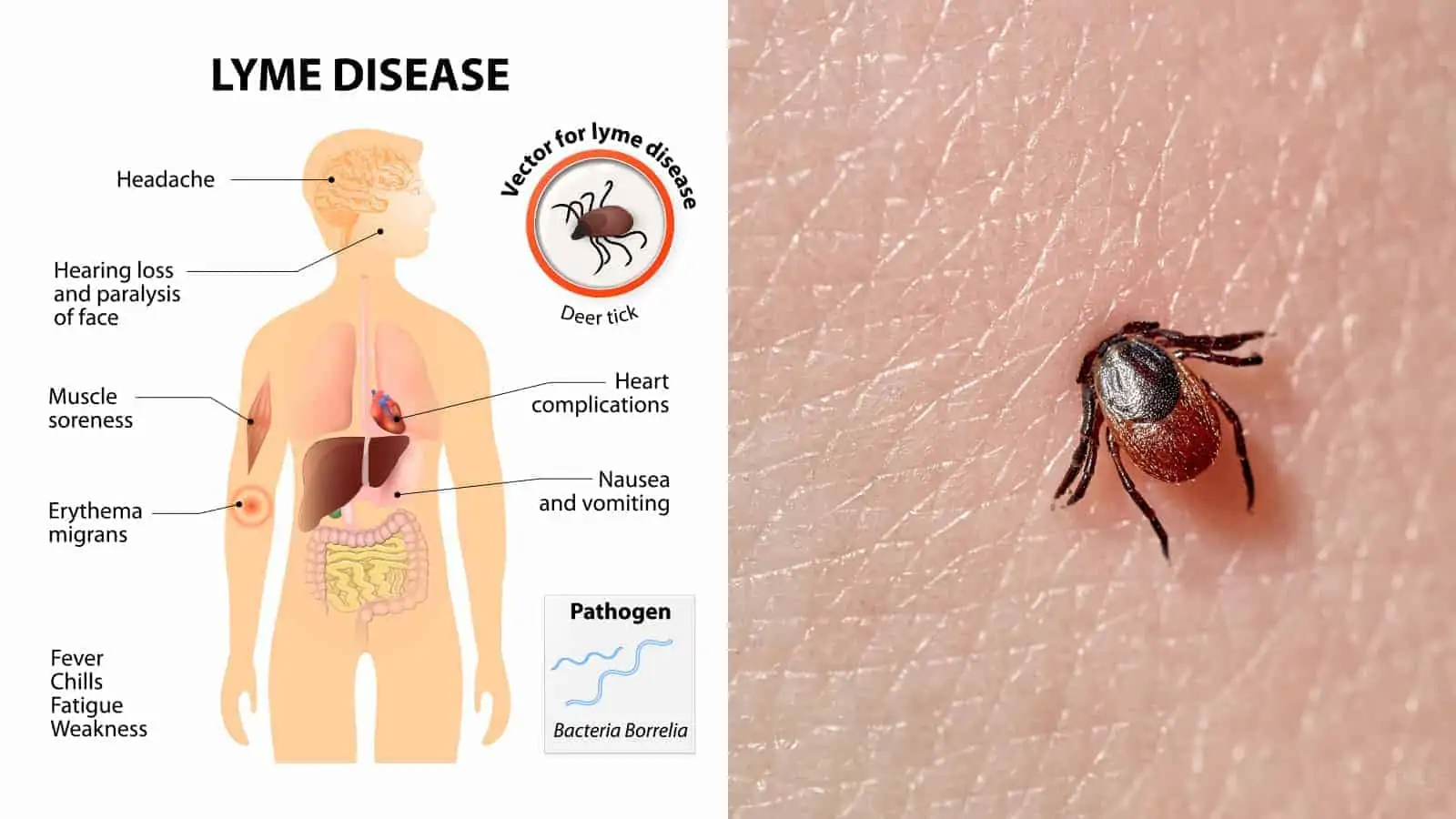Introduction
Lyme disease is a tick-borne illness caused by the bacterium Borrelia burgdorferi. It is one of the most common vector-borne diseases in the Northern Hemisphere. Transmitted primarily through the bite of an infected black-legged tick, also known as a deer tick, Lyme disease can lead to serious health issues if not diagnosed and treated promptly. Although many people recover completely with early treatment, the disease can sometimes result in long-term symptoms if overlooked.
How Lyme Disease Spreads
Ticks that carry Lyme disease bacteria become infected after feeding on animals such as mice or deer that already carry the bacteria. Once infected, the tick can transmit the bacteria to a human through a bite. The risk of infection increases the longer the tick remains attached to the body, particularly if it stays attached for more than 36 to 48 hours. Most cases of Lyme disease occur during the spring and summer months when ticks are most active.
Regions Where Lyme Disease Is Common
Lyme disease is most commonly found in North America, Europe, and parts of Asia. In the United States, it is especially common in the Northeast, Upper Midwest, and Pacific Northwest. People who spend time outdoors in wooded or grassy areas are at higher risk, including hikers, campers, gardeners, and outdoor workers. Awareness of tick presence in these areas is key to preventing infection.
Signs and Symptoms
The symptoms of Lyme disease can vary depending on the stage of the infection. Early symptoms usually begin 3 to 30 days after the bite of an infected tick.
The most common early symptom is a rash called erythema migrans, which typically appears as a red circular patch at the site of the tick bite. In many cases, this rash resembles a bull’s-eye pattern and may gradually expand.
Other early symptoms may include fatigue, fever, chills, muscle and joint aches, headache, and swollen lymph nodes. If left untreated, the infection may spread to other parts of the body over weeks or months. This can cause more severe symptoms, including joint pain or swelling, nerve problems such as numbness or facial paralysis, irregular heart rhythms, and memory difficulties.
Diagnosis
Diagnosing Lyme disease involves a combination of physical examination, medical history, and lab testing. Doctors often rely on the patient’s symptoms and whether they have been in areas known for Lyme-carrying ticks. The appearance of the erythema migrans rash can be enough to begin treatment even without lab confirmation.
Blood tests can be used to detect antibodies to Borrelia burgdorferi, but these are more accurate a few weeks after infection when the body has had time to produce a detectable immune response.
Treatment
Lyme disease is treated with antibiotics, and early treatment usually leads to a full recovery. Oral antibiotics such as doxycycline, amoxicillin, or cefuroxime are commonly prescribed for a period of 10 to 21 days, depending on the case. In more advanced cases, especially when the nervous system is affected, intravenous antibiotics may be necessary.
Some patients continue to experience symptoms such as fatigue and pain even after the infection is cleared. This condition is known as post-treatment Lyme disease syndrome. The exact cause of this lingering illness is not yet well understood, but ongoing research aims to provide better answers.
Prevention Strategies
The best way to avoid Lyme disease is to prevent tick bites. Here are some practical steps:
-
Avoid walking through tall grass, bushes, and heavily wooded areas when possible.
-
Wear light-colored clothing to spot ticks more easily.
-
Tuck pants into socks and shirts into pants when walking in grassy or wooded areas.
-
Use insect repellents that contain DEET or permethrin.
-
Check yourself, children, and pets thoroughly for ticks after spending time outdoors.
-
Shower within two hours of coming indoors to help wash off unattached ticks.
-
Keep yards clear of tall grass, and use tick-control treatments in outdoor spaces.
Tick Removal
If a tick is found attached to the skin, it should be removed as soon as possible. Use fine-tipped tweezers to grasp the tick as close to the skin as possible and pull upward steadily. Do not twist or jerk the tick, as this can cause parts to break off and remain in the skin. After removal, clean the area with soap and water or antiseptic. Dispose of the tick safely and watch for signs of illness over the next few weeks.
Conclusion
Lyme disease is a preventable and treatable condition, but it can have serious consequences if ignored. Early recognition of symptoms, especially the rash and flu-like signs, can lead to quicker diagnosis and recovery. By understanding how the disease is spread and how to protect yourself from tick bites, you can reduce the risk of Lyme disease and enjoy outdoor activities with peace of mind. Staying informed and taking simple precautions can make a significant difference in avoiding this silent threat from nature.













Comments are closed